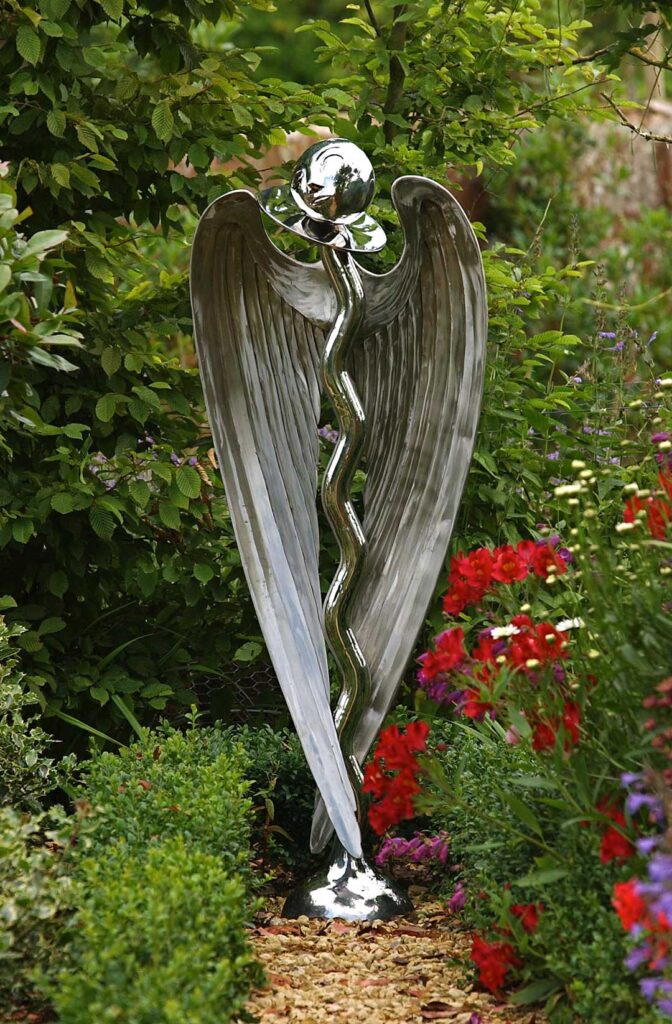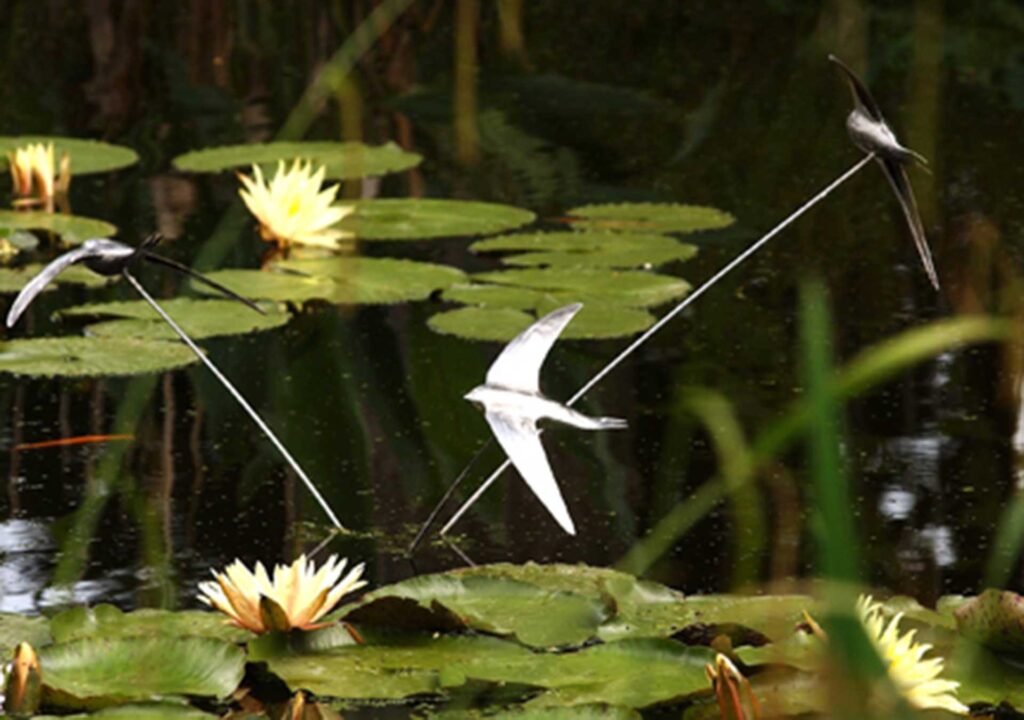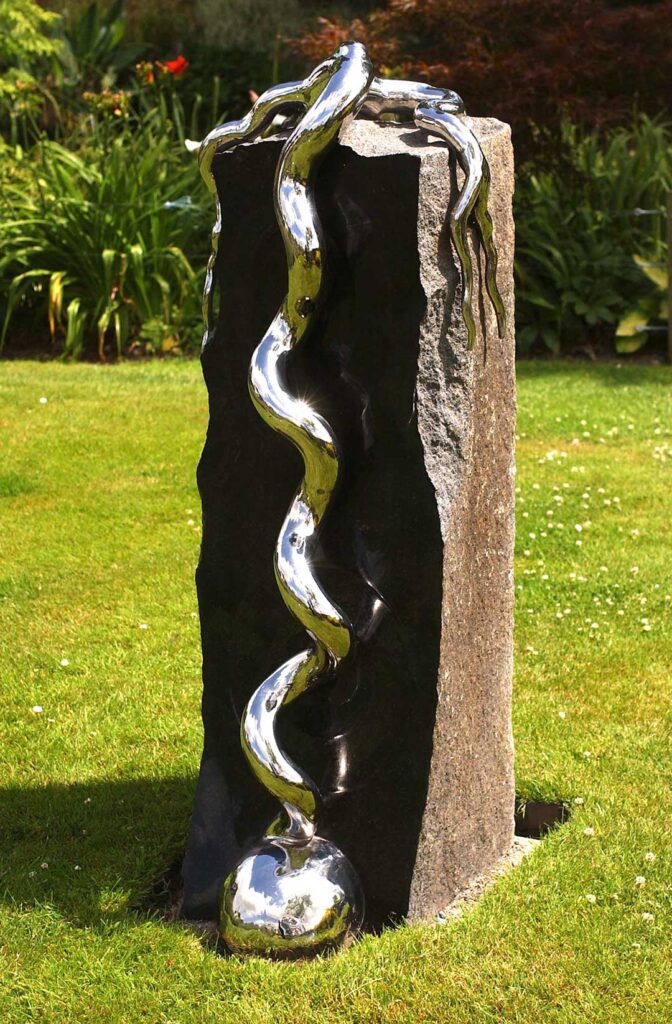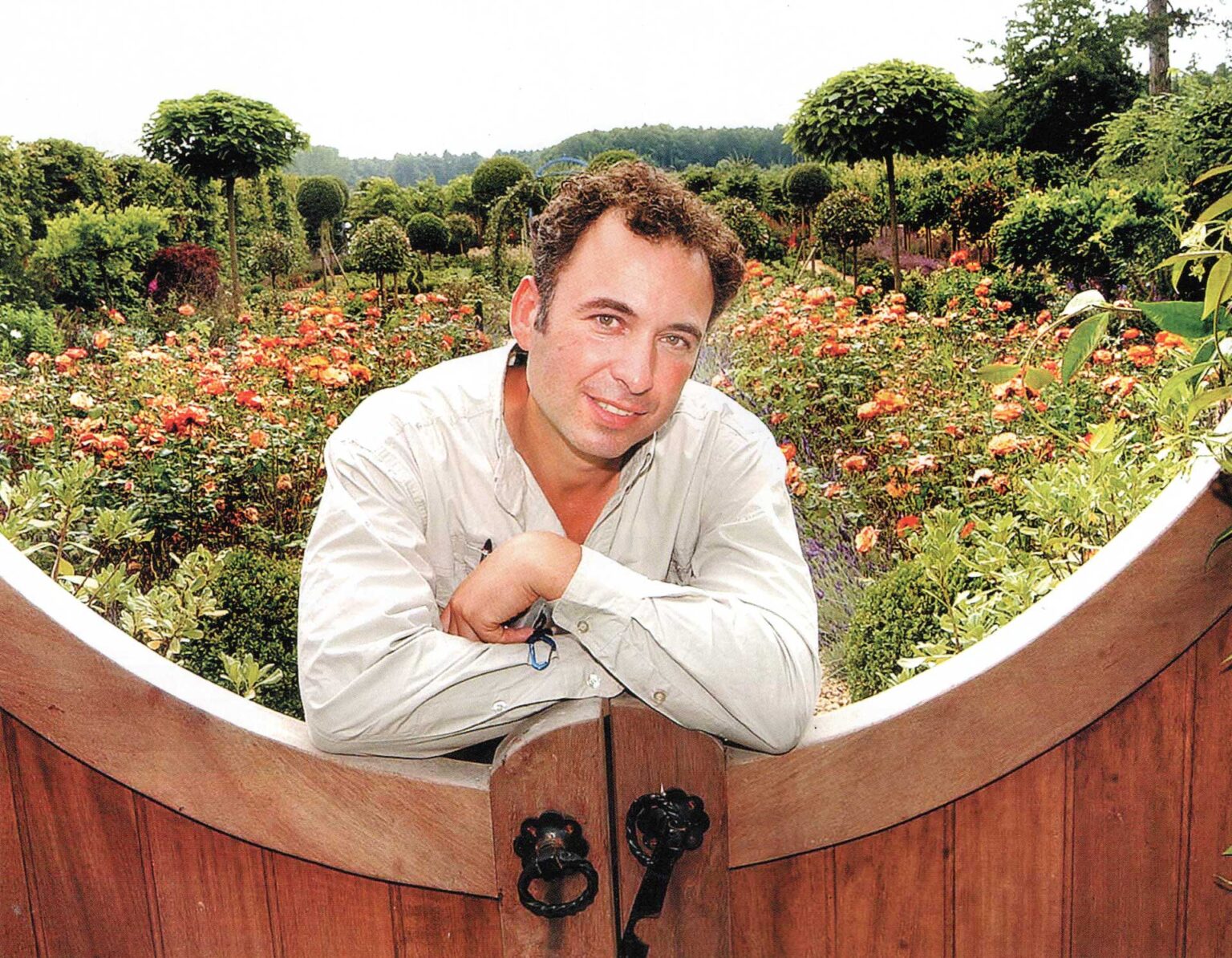The Shropshire Magazine. Words: Gill Guest. Pictures: Malcolm Couzens.
Momentarily I thought I was back at the Chelsea Flower Show, for Mary Poole’s stupendous country garden not far from Shrewsbury would not look out of place at the greatest flower show on Earth.
It’s well thought out and bountifully planted. Mary has employed only the finest craftsmen and materials and in the process created an awesome garden – a Shropshire jewel.
No expense has been spared on the all important structure of the garden, which is provided by a strong framework of container-grown hedging plants, substantial trees and clipped topiary. These lend instant maturity and a touch of formal severity, which is softened by borders overflowing with herbaceous perennials and scented by armfuls of roses and lavender.
I find the effect completely intoxicating, but fortunately Mary has thoroughly provided seats and finely crafted arbours throughout the garden for me to pause often and recover my senses.
It is hard to believe that the garden is only seven years old.
“We could have planted little things and waited until we were old and doddery to enjoy them, but I would rather enjoy them now.” Mary explains. “Gardening is one of my twin passions. I have always loved it. I find it very therapeutic – growing plants is very healing”.
Mary’s other passion is her business, in which she works with vulnerable children. When she first encountered the garden she remembers that it “needed loving back to life – like the children”. The garden provides a welcome counterpoint to her emotionally demanding business and acts as a restoring sanctuary.
When Mary met the sculptor Jeremy Schrecker they soon discovered they shared empathy with nature. In addition the both appreciated the spiritual nature of gardens and valued skilled craftmanship with finest quality materials.
It wasn’t long before Mary asked Jeremy to produce some designs for her garden. From these, she commissioned four contrasting pieces, so varied that they could easily have come from the workshops of four different sculptors.


“My work is craft based,” Jeremy explains. He is scathing about the current vogue for conceptual art and installations such as Tracey Emin’s infamous bed. “Ideas are important but not without the craft – good art should survive time.” he comments, dismissing conceptual art as a fad. He likes to use strong abstracted forms and organic shapes to which people can relate, using high quality materials and demonstrating superb craftmanship.
He favours steel but works intuitively with stone and water, demonstrating all three in pieces in Mary’s garden. Skillfully steering me around, he ensures that I see the sculptures as a progression from the most figurative and lifelike to the most abstract. Our first stop is a thatched circular pool house overlooking the natural pond, where we pause to admire Jeremy’s steel swifts swooping low over the water.

This pond was very overgrown when Mary came to the garden, full of reeds and with no open water. She called in a specialist pond restorer, Martin Perry, whom she stumbled across at a rather unlikely garden centre in Norfolk which was only ever open by appointment.
Martin duly transformed the pond into a relaxed scene of crystal clear water supporting a raft of soft yellow water lilies, and then, instead of returning to Norfolk, continued to lend a hand in other areas.
Martin has become an essential part of the garden. He still treks all the way from Norfolk for four days every three weeks or so and acts as an invaluable sounding board for Mary’s ideas, tempting them with his own. Together the converted the old diseased orchard into the Italian garden, which is where Jeremy and I head off to find a steel angel.
Concealed among twirls of topiary, photiniata balls and yew spirals, clipped box and bay, the lifesize angel is almost figurative.
Her tactile, highly polished head reflects today’s absurdly blue sky with fluffy white clouds in the heavens, and her face has an angelic, pensive expression. Her wings are the wings of swifts, in brushed steel, coyly folded one with its tip over the other.
“I was searching for abstract language that evokes the spiritual quality of an angel,” Jeremy explains, and certainly there is something very quiet and still about her. He also likes the idea of creating a contrast – a “hum” he calls it – between the sculpture and its surroundings. In this case, the angel’s cool serenity is in startling contrast to the adjacent hor border – penstemon in boiling shades, fiery alstroemeria, ruby astrantia and flame coloured heleniums.
On the opposite side of the Italian garden, beyond an enticing timer arbour in which I am allowed only the briefest of pauses, is the World Stone. A large sphere of blue basalt perched on a black granite plinth, from which water glides silently, it looks like a planet. The blue basalt has a most curious diaphanous quality that evokes the atmosphere around the planet, and the highly polished surface cries out to be caressed.
Jeremy’s last piece lies on a small oval lawn beyond the rose garden, overlooked by another welcome garden bench. The most abstract sculpture so far, I see it as a black basalt pillar up which a stainless steel, newly emerged runner ben shoot is exploring. Nearby, forming a relationship with the pillar and the shoot, a second highly polished mirrored bean seed lies shimmering like a droplet of mercury.
The sculpture was inspired by nature, by the way in which roots splay and water divides into rivulets and how plants search, but Jeremy intended that it should be open for anyone to see anything in it. It is quite possible, even probable, that no one else will see it as I do, as a questing runner bean sprout.
The setting of uncompromisingly modern abstract sculptures in what is a very traditional, soft and pretty formal garden is a very daring and courageous thing to do. But Mary’s bravery has more than paid off – the contrast of the hard and chunky, sleek and shiny sculptures against the floral froth of the garden creates much more than just the “hum” that Jeremy was looking for. If you ask me, it’s more a kind of buzz – the buzz of excitement.

